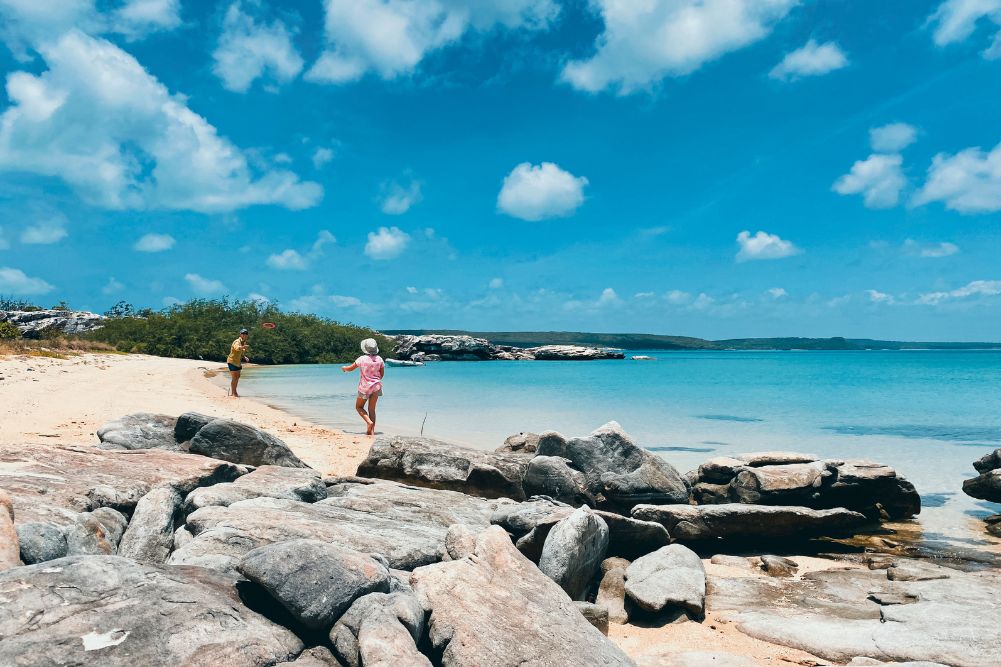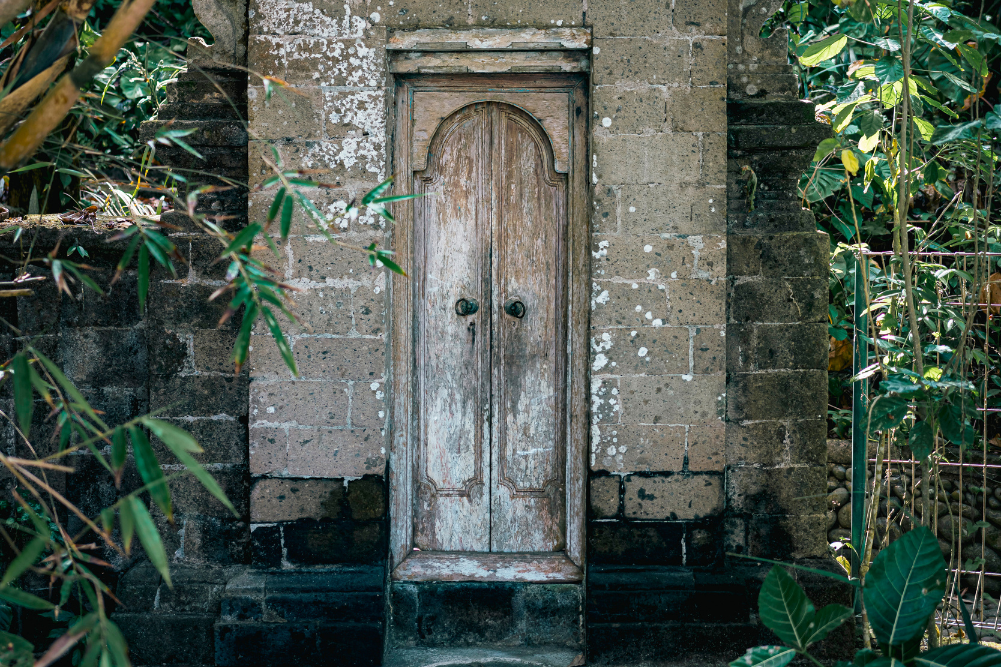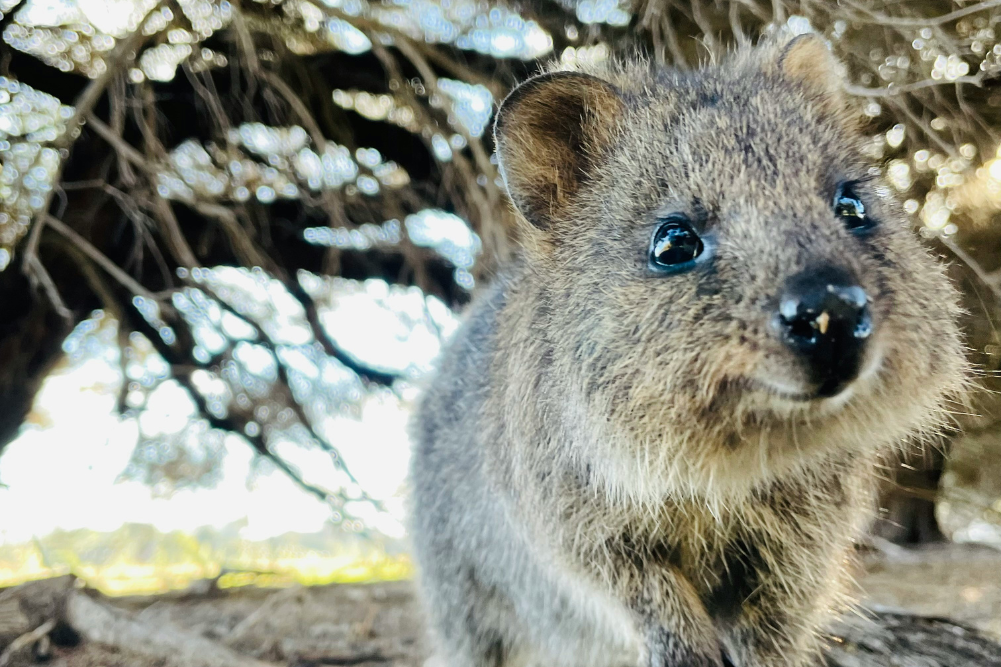Exploring Wilderness Sanctuaries & Endangered Species
Did you know that Australia has one of the highest animal extinction rates in the world? Escape on a wilderness exploration and visit some of our most endangered species on your next vacation.
I’m about to escape for three blissful weeks of road tripping when I read a snippet of news that turns my holiday on its head. It’s the latest list of worldwide animal extinctions, and I’m appalled to discover that most of them are ours. Australia — for all our sanctuaries and collective sympathy — has one of the highest animal extinction rates in the world. One in every three mammal extinctions in the last 400 years has happened here. Ironic, isn’t it, given that mammals are so closely entwined with our collective Australian identity? Think koalas, echidnas and the platypus, Tasmanian devils and dunnarts, woylies and wombats: all of them distinctly Australian and all of them at risk.
This inescapable truth stalls my self-indulgent holiday plans, so I swap infinity pools for outback waterholes, scrawl a list of four enigmatic, endangered creatures and set out to explore the sanctuaries that protect them best. From the Atherton Tablelands to Idalia, hiking rainforest trails and off-roading through Central Queensland’s Mitchell grasslands, just one question plagues my mind: if wildlife encounters were made mutually beneficial, could an Aussie adventure holiday have the power to save a species?
Lumholtz’s tree-kangaroo
Mount Hypipamee National Park, Atherton Tablelands
If you crossed a bear with a kangaroo, the result might look something like the Lumholtz’s tree-kangaroo. Heavily muscled and residing almost entirely in the canopy, it dwells only in Far North Queensland’s high-altitude rainforests and nowhere else on earth. The world first learned of this creature called mabi (Dendrolagus lumholtzi) in 1882 when Indigenous guides led zoologist Carl Lumholtz onto the Cardwell Range, 185km south of Cairns. Today, the remnant forests that support them are fragmented and dwindling, and as few as 2000 mabi are estimated to remain.
I encounter my first mabi in Mount Hypipamee National Park. Walking before dawn along the silent track to Dinner Falls, a Lumholtz’s bounds suddenly across my path. It scurries ahead (tree-kangaroos walk, not hop), before climbing swiftly away into the canopy. With its tail swinging, its eyes fixed firmly upon me, it lingers in clear view just long enough to turn my fascination into something more reverent. But it’s a blind tree-kangaroo called Bonnie that renders me completely undone.
I meet Bonnie in Australia’s only tree-kangaroo rescue centre, where ecologist Dr Karen Coombes and her husband Neil have spent more than 20 years rehabilitating injured Lumholtz’s tree-roos on the Atherton Tablelands. These uniquely cathemeral creatures — equally active both day and night — easily come to grief, moving, as they do, between the few, small and sparsely located patches of forest that remain on the Atherton Tablelands. When the worst happens, Coombes takes them in, raising and patiently training youngsters for release into the wild and rehousing adults too damaged to survive.
While I’m cradling this precious orphan and rapidly transforming into her newest advocate, Dr Coombes rambles passionately about how to save a species. For all her round-the-clock care, she insists that their survival depends on people getting to know tree-kangaroos, on us seeking out wild encounters, and ultimately, turning that fascination into a fight.
Not everyone gets to cradle a tree-kangaroo — the Coombes’ rescue centre is for the roos, not a zoo — but this orphan in my arms is an incongruous reminder of how far away she is from the forest. I return to Mount Hypipamee at dawn the next day, and continue my fruitless tree-kangaroo search at nearby Wongabel State Forest outside Atherton. I finally find my way to Nerada Tea Plantation where a stand of old trees shading the touristy teahouse attracts tree-kangaroos too. They are clearly visible but keeping their distance, as I stir my tea and ponder the alarming proximity of this urban encounter.
No one knows just how many Lumholtz’s tree-kangaroos remain. Finding out costs money, and precious little is on the table. But many conservation agencies, including the Australian Wildlife Conservancy, fear that wild tree-kangaroos face a very uncertain future.
Dr Coombes is positive: knowledge is power, wild encounters fuel passion, and fascination can woo people to join the fight. For your best chance of encountering a tree-kangaroo in Far North Queensland, set out early on walking trails through Mount Hypipamee National Park, located 24km south of Atherton on the Kennedy Highway. Time your trip for May to catch the Malanda Tree Roo Awareness Week festival, and support the work of Dr Coombes by learning and donating at treeroorescue.org.au.
Southern cassowary
Abergowrie State Forest, Cardwell Range
A few hours’ drive down the Bruce Highway, I reach the place where Lumholtz’s tree-kangaroos were first discovered. Here too, southern cassowaries roam wild and free, and Broadwater Creek smooths the river stones, eddying in clear, delicious pools. On its banks, a tranquil forest sanctuary safeguards a rare patch of riparian rainforest, and little-walked historical foot trails tempt me in Carl Lumholtz’s footsteps towards the towering Cardwell Range.
The shortest wander showcases the most famous tree in the woods: the 200-year-old Broadwater Fig, arcing across a canopy that feeds fairy wrens and spotted catbirds at dawn. The low-key campground is full of fireflies and feathertail gliders after dark, and offers shade aplenty with easy access to sandy swimming holes stretched along the creek.
It’s exactly the kind of place you’d expect to encounter wild things, but cassowaries (Casuarius casuarius johnsonii) are in short supply. Flightless, solitary and very territorial, cassowaries need significant room to roam, but their habitat has been reduced to a patchwork of protected forests stretching from Ingham to the tip of Cape York Peninsula. The forests these birds inhabit are coastal and magnificent, so it’s easy to see why their biggest adversary is us.
A few years ago it was discovered that the remarkable casque that crowns the cassowary’s head — unique to each and every bird — enables infrasound. This remarkable sensory skill is similar to that of dinosaurs and elephants, and enables the cassowary to detect communicative sounds from very distant mates. I marvel at this level of sensory awareness as I crunch loudly along my favourite trail, winding beneath towering green fan palms on the edge of Broadwater Creek.
In the early morning quietude I hear rustling in the forest and the distinct call that gives wompoo fruit doves their name. But the cassowary eludes me and, as the day warms up, the bubbling, boulder-studded pools at the Overflow prove far too inviting. For all my wanderings, in decades of living in cassowary country, I can count on one hand the number of cassowaries I’ve encountered. Once in the Daintree (as it ran across a road), once while sipping tea in a Mission Beach back garden, and twice in places that cassowaries should never have been — a roadside rest area and a learning centre, full of cars, dogs and people.
Officially endangered, the cassowary is ranked the world’s most at-risk ratite, a group of flightless birds that includes the long-extinct moa and elephant bird. It’s easy to crystal-gaze and see only doom, but the cassowary has a formidable force on its side.
Peter Rowles heads the long-standing Community for Coastal and Cassowary Conservation, known as C4, working to buy back land, revegetate forest corridors, assist the local cassowary hospital and raise funds to educate all of us about why cassowaries matter. C4 runs a thriving nursery for their planting projects and a beachfront environment centre that acts as the town’s premier visitor centre, and all of it is volunteer-run.
Wild cassowaries are easiest to encounter in Djiru National Park, which safeguards the last large stronghold of Licuala ramsayi fan palm forest. Supporting their survival is easy: just head to cassowaryconservation.asn.au to learn, volunteer, shop and donate.
Julia Creek dunnart
Bladensburg National Park, Winton
At Townsville I leave the coast in my wake, turning inland across arid Mitchell grasslands towards Bladensburg National Park. On the outskirts of Winton I set up camp at Bough Shed Hole, and drive my 4WD through a stark, sandstone landscape of flat-topped “wild west” mesas and golden grasslands. I brave the spinifex-covered jump-ups that elevate me above endless clay-soil plains, and slide into faraway waterholes at Logan Falls and Skull Hole.
Preserving a pioneer-era homestead that houses a free-to-enter museum, outstations and graves, this national park serves to safeguard the largest known population of rare, rarely seen and endangered dunnarts. Tiny enough to make a home in the deep cracks of arid clay pans, Julia Creek dunnarts (Sminthopsis douglasi) are mouse-like and small. Their existence is fleeting — each lives for just two to three years — and their nocturnal life so secretive that no one knows how many remain. I glimpse them briefly in daylight hours in a glass enclosure at the Julia Creek Tourist
Information Centre, but in the wild lands of Bladensburg, the dunnart safely eludes me.
Here, on the traditional lands of the Koa, Maiawali and Karuwali peoples, big reds steal the show: towering males and small, grey-blue coloured females with pouches full of infants. They graze in great mobs on golden grasslands at sunset, joined by emus and emu-wrens too.
Red river gums shade my camp on the edge of Surprise Creek, which is everything it advertises and so much more. Before the apostle birds arrive in one great noisy swoop, I spot babblers and bustards and a secluded bowerbird nest. Despite my night-time wandering, the dunnart stays tucked out of sight but not entirely safe. In 2021, despite promising to activate its own Julia Creek dunnart species recovery plan, the Commonwealth Government approved a rare mineral mine, located 25km from Julia Creek on dunnart habitat.
The damage may be done, but you can follow and support by visiting australianwildlife.org.
Yellow-footed rock-wallaby
Idalia National Park
There is no such worry in Idalia’s rugged sandstone wilderness, a sanctuary set aside to conserve seven macropod species. Hunted extensively in the late 1800s, endangered bridled nailtails (or flashjacks) were thought to be extinct until a fencer recognised one in 1973. A few years later, Taunton Scientific Reserve was established near Dingo to protect the species’ small, surviving population, and when it came time to translocate some of the endangered flashjacks, Idalia National Park provided ideal habitat.
High on the park’s rocky escarpment dwells another excessively hunted creature: the region’s own subspecies of yellow-footed rock-wallaby (Petrogale xanthopus celeris), whose distinctive black and yellow coat was in high demand a century ago. It lures me to the very edge of Bullock Gorge to see the setting sun silhouette a female yellow-footed rock-wallaby and her joey, boulder-hopping on tiny golden feet. Surprisingly small with
a colourful coat and distinctive striped tail, these enigmatic creatures dazzle me until the light completely fades and I return buoyantly to camp.
I return at dawn to hike the ridgeline above Bullock Gorge, binoculars at the ready to watch rock-wallabies at play.
I descend the rugged escarpment through brigalow scrub, witness the glistening marbled mosaic of ruby-red Rainbow Gorge at noon and spend an afternoon spotting red and grey kangaroos, swamp wallabies and common wallaroos. There are black-striped wallabies too, grazing on short grasses that bridled nailtails ignore, and all of them seem content in these lands long ago abandoned by pioneering Aussie pastoralists.
By the time I return to my Monks Tank campsite to kindle a campfire and sip something red, stars have appeared overhead. There are plenty of them this far from any town, and nobody but the roos to share them with. Although still vulnerable in Queensland and South Australia, yellow-footed rock-wallabies are endangered in New South Wales but they have their defenders too. The Australian Wildlife Conservancy protects a population at Buckaringa Sanctuary in the Flinders Ranges, and you can support their work by learning, volunteering, shopping and donating at australianwildlife.org.
After weeks of exploring, when I hit the road for home, all these wild adventures become much more than memories. I feel a kinship with these creatures and they’ve filled my bucket, but it’s what happens afterwards that has the power to save a species.
Escape routes
Atherton Tablelands
Go: Head 95km west of Cairns to Mount Hypipamee National Park (parks.des.qld.gov.au).
Stay: The Canopy Treehouses (from $399/night, canopytreehouses.com.au).
Protect: Join Malanda’s Tree Roo Awareness Week in May.
Abergowrie State Forest and Mission Beach
Go: Abergowrie is located 82km south of Mission Beach.
Stay: Campsites cost $7/person/night. Cabins at Sanctuary Retreat start from $70/night (sanctuaryretreat.com.au).
Protect: Visit the Cassowary Festival at Mission Beach, and learn, shop, donate and volunteer at cassowaryconservation.asn.au
Bladensburg National Park
Go: Drive 590km southwest of Townsville.
Stay: Luxury, solar-powered stays at Winton’s Rangelands Outback Camp cost $690/person/night (2-night min., adults only, rangelandscamp.com). National park campsites cost $7/person/night.
Protect: Visit australianwildlife.org
Idalia National Park
Go: Head 113km southwest of Blackall.
Stay: National park campsites cost $7/person/night (parks.des.qld.gov.au.).
Protect: SA’s Buckaringa Wildlife Sanctuary protects yellow-footed rock-wallabies; find out more at australianwildlife.org
What more do we have to lose?
Mammals: Tasmanian devil, numbat, mountain pygmy possum, Gilbert’s potoroo, northern quoll, black-flanked rock-wallaby, black-footed tree rat, brush-tailed bettong (woylie) and the rufous hare-wallaby (mala).
Marine creatures: Green sea turtle, grey nurse and great white sharks, Australian sea lion and the short-nosed sea snake.
Birds: Western ground parrot, red-tailed black cockatoo, eastern curlew, Gouldian finch, orange-bellied parrot, paradise riflebird, black grasswren and the Tasmanian wedge-tailed eagle.
Bats and more: Southern best-wing bat, southern corroboree frog, Margaret River burrowing crayfish and many, many more.








